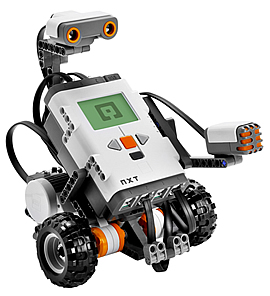Last week we watched a presentation given by electrical engineer, Tom Vale. He came in with a cart of numerous types of small gadgets, asking students to put their computers down to clear the space so he could set up mini experiments. He initially began talking about alternative fuels and energy, discussing how we need to start using other sources because we are burning it up quickly. Alternative energy sources are not just a problem of today but rather were addressed back to hundreds of years ago. The small gadgets and experiments that were set up on the table in front were example of simple devices that were used in that time for alternative energy. These power engines create energy without burning any fuel. The three alternative energy sources he would be demonstrating to us were the Peltier Device, Stirling Engine and Piezo Electric effect.
The first experiment was a small metal piece with two legs that split into two different cups. One cup held warm water while the other cup held cool water. The top piece was joined by a small fan on top. This was known as the Peltier Device. The Peltier Device was created in 1834 by physicist, Jean Peltier. He discovered two dissimilar metals put together created electrical energy. One side of the device would be emerged into hot water and the other side would be put into cold. Electricity would be generated in junction and the two bars on the top of the device would begin turning. A current is made to flow through a junction made of two different materials. Heat generated in the upper junction is absorbed in the lower junction, known as the Peltier effect. However, the Peltier effect is only 10% efficient.
Next, we were looking at another cup filled with hot water. A piece sat around the rim of the cup that had a cyclic compressor attached that moved up and down similar to a pendulum. A fan was attached to the top of this piece as well, showing that energy was being produced. Heat is transferred to and from gas at different temperature levels. This was known as the Stirling Engine developed in 1816 by Robert Stirling. Steam engines were extremely dangerous causing many deaths among workers due to explosions. The purpose of the Stirling Engine was to eliminate steam engines with a safe, more efficient energy source. This alternative energy source is 60% efficient.
At last we saw the Piezo Electric effect. Tom showed us a BBQ lighter, breaking down the system of how it works into a simpler form. A small rectangular cortz crystal is squeezed to produce the flame from the lighter and increasing voltage known as the Piezo Electic effect. Lawnmowers and radio transmitters function in a similar way. We compared this with a solar powered engine. The solar cells convert the light into electricity through magnets from traction and repulsion.
I found all these experiments extremely interesting because of their simple structure to produce something as complex as energy. For the grand finale, we watched Tom attract energy through a wireless transfer. Tom turned on the electric generator that had small tessler coils on the top of the machine that emitted a light that looked like small strikes of purple lightening. First, Tom used a long wand-like tube object filled with neon and mercury. When the wand was the accurate distance from the generator, the tube started glowing, half pink and half blue. It was amazing to see energy transferred through the air!
Tom said, “In science, people are always taking original ideas and looking to improve them.” Hopefully from these simple ideas, we can use our technology and improved knowledge of today to create energy efficient alternatives
















